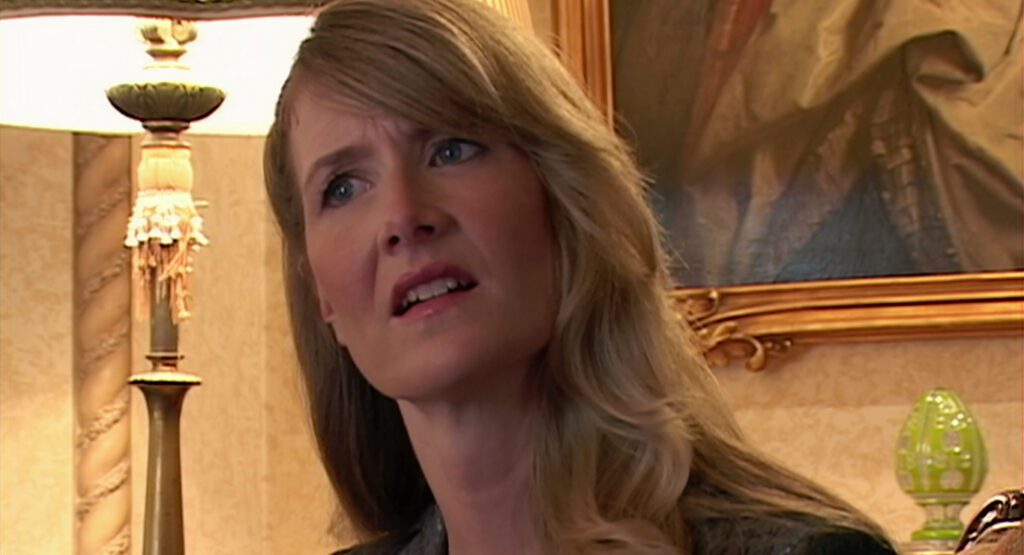
Inland Empire
2006, directed by David Lynch
Early in Inland Empire when film director Kingsley Stewart (Jeremy Irons) gathers his stars for their first line reading, he confides to them that the movie they’re working on is a remake. Devon Berk (Justin Theroux) balks at this news, declaring adamantly that he doesn’t do remakes, but Kingsley assures him it’s not what it sounds like. Given how many parallels will emerge between movies and life, it shouldn’t be surprising if Inland Empire itself were a remake too. Lynch himself may not have been aware how closely his movie resembles the 1923 German silent film Warning Shadows, but once we see this, even Lynch’s notoriously cryptic movie begins to reveal its logic.
The kernel of both plots is a story of a wealthy man who is murderously jealous of his wife – the baron in Warning Shadows and Piotrek (Peter J. Lucas), the husband of Hollywood actress Nikki Grace (Laura Dern) in Inland Empire. Both feature a movie within the movie that echoes and extends the passions from the “real life” framing story. In Lynch’s film the inner movie is not simply projected as it is in the silent film; it’s the production Nikki and Devon are working on entitled On High in Blue Tomorrows – but in any case characters in both films wind up seeing themselves in the third person, witnessing their own actions on or off screen. In both cases the inner story climaxes with the wife fatally stabbed by people under the husband’s influence (in Inland Empire the Phantom, a Polish man connected to the husband, hypnotizes Billy’s wife to kill Susan).
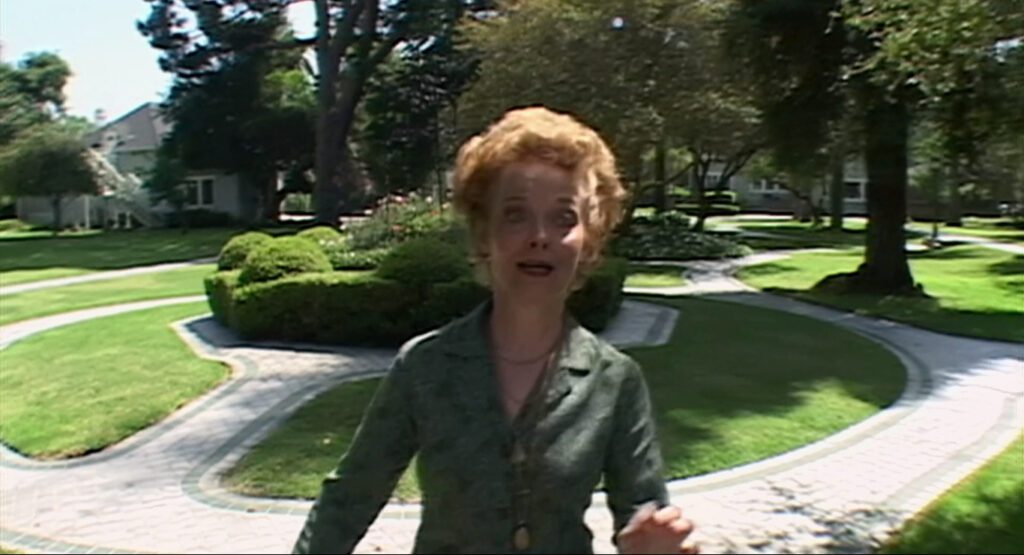
The jealous husband, the adulterous wife, and her suitor match up cleanly from one film to the next, but the traveling showman from Warning Shadows is harder to place. The only intruder into Nikki Grace’s house is her “new neighbor” (Grace Zabriskie), whose scene ends when she points to the sofa, getting her hostess to look in amazement at her own immediate future. Like the showman’s Chinese shadow play, this gesture initiates the movie’s inner story which blends both the plot and the making of Blue Tomorrows. Nikki’s neighbor has a far smaller role than the showman, but another quality also connects them – both are Polish. To be precise, Nikki’s visitor speaks with a Polish accent and is played by a Polish-American actress, and the showman is played by Alexander Granach who came from the Polish-speaking part of the Austro-Hungarian Empire. (The choice to put so much of Poland in Inland Empire is an even bigger riddle than the rabbits or the lost girl, and this coincidence at least offers a possible reason for it.)
Another detail links the two films, something small but not at all trivial. In the opening credits to Warning Shadows there’s a candle that will turn out to represent the cinematic apparatus, the power to cast shadows like a movie projector. Inland Empire opens with a spotlight, another cinematic apparatus, which throws the letters of the movie’s title into relief. As these two lights indicate, both movies are about the power of cinema.
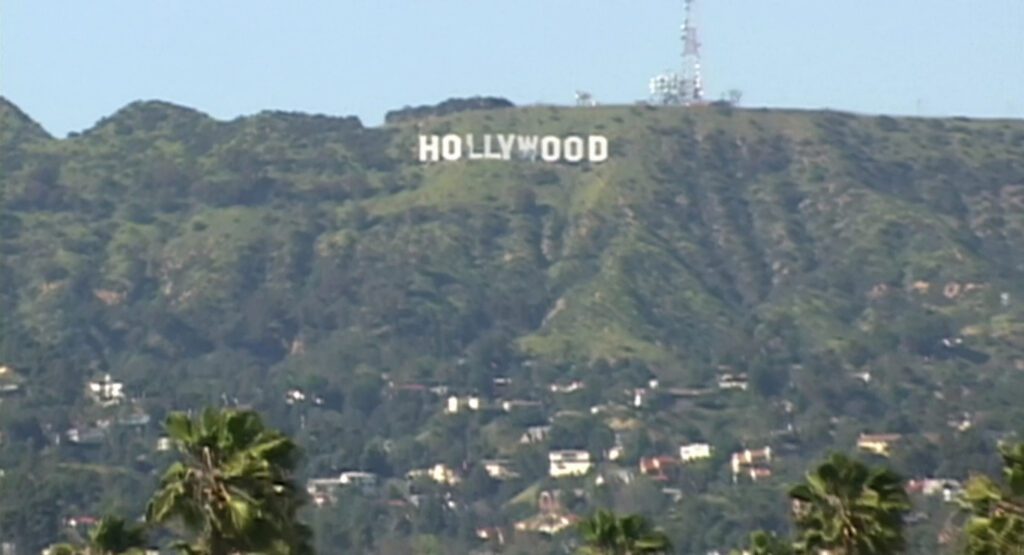
It’s not at all unlike Lynch to make a film about cinema. Mulholland Drive was about Hollywood’s dominant place in our lives – not only the actual Hollywood, but the global culture of manipulative entertainment that the old Hollywood gave birth to. The iconic Hollywood sign appears in Lost Highway, Mulholland Drive, and again nineteen minutes into Inland Empire right before Nikki shows up to work at the studio. Its importance in Lynch’s films dates back to Eraserhead where the radiator, when introduced, is lit to resemble an abstract version of the famous sign.
That radiator, which unfolds to become a theater stage, the only thing in Eraserhead remotely resembling entertainment, resurfaces in room 47, the rabbits’ green apartment in Inland Empire, which Nikki enters toward the end. Significantly, Nikki stands in front of the radiator for an extended moment right before she breaks the “fourth wall” to meet the lost girl. Unlike in Eraserhead, the entertainment world shows up often in Inland Empire. The rabbit scenes, like the radiator and the Hollywood sign, are shorthand for Hollywood in the broadest sense: a global industry that colonizes billions of minds, shaping our desires and values. The rabbits are a send-up of a sitcom, with canned laughter and applause, fragmentary jokes, and bits of melodrama patently manufactured to keep an audience hooked. They appear on a television screen, but they could just as well stand for advertising, popular cinema, celebrity shows, or any of several modes of entertainment that orbit the conceptual Hollywood that the original Hollywood spawned.
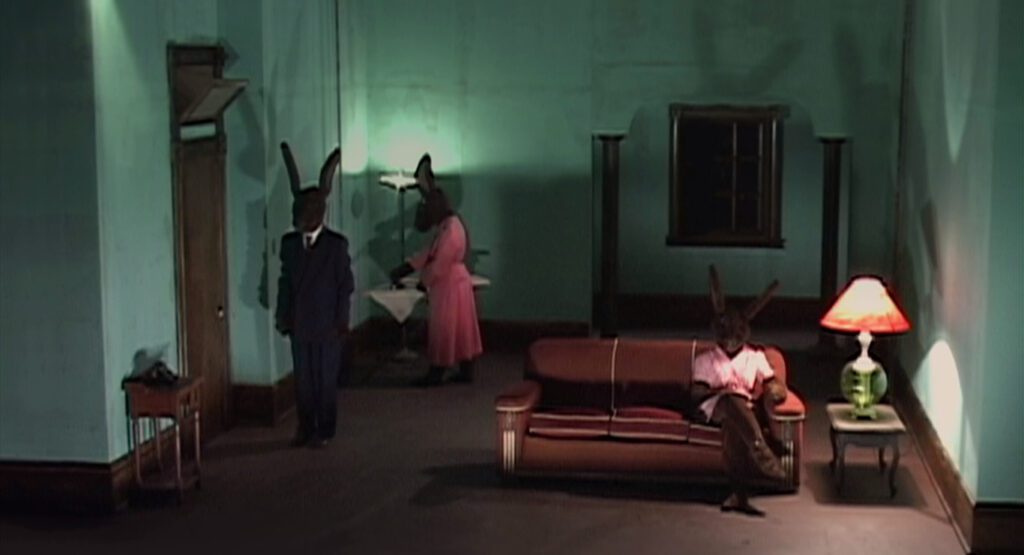
Like so much in Inland Empire, the title has multiple meanings. The real-life Inland Empire is a region northeast of metropolitan Los Angeles that includes Riverside and San Bernardino. In a sense it represents the land just beyond the capital of entertainment – the beginning of the rest of the world that’s subordinate to Hollywood. The dialogue alludes to it vaguely, including the homeless women in Susan’s death scene discussing the way to Pomona, a suburb right on the edge of the Inland Empire. On a deeper level it stands for the inner territory Hollywood has colonized, the vast space in our collective minds it has come to occupy. Mulholland Drive focused on the dark side of this virtual empire, showing how Hollywood has infected so many of us with aspirations for glamor and drama that weren’t nearly so widespread before movies came along. Diane Selwyn is a victim of Hollywood’s allure, simultaneously seduced by success and terrified of failure, the latter embodied by the homeless person behind Winkie’s.
The figure behind Winkie’s appears all over Inland Empire: the image is echoed in the lost girl, in the prostitutes, in the neighbor’s story of a little girl wandering into an alley, and in the homeless people who surround Susan when she dies. Failure was Diane Selwyn’s greatest fear in Mulholland Drive, an object of horror, but here it’s brought down to earth and humanized. Failure is a common denominator of human experience, but Hollywood has a long history of denying or concealing this.
Once we see how close Inland Empire is to Warning Shadows, we can already sense the basic shape and, more importantly, the purpose of Lynch’s film, even if some loose ends remain. It’s no longer difficult to fit most of the enigmas together. The lost girl, who watches Nikki and the rabbits on a staticky television in Poland, and whose life the story echoes in so many ways, is Hollywood’s global audience – a role assumed by the household and its guests in Warning Shadows. Lynch merely adds a third layer of nested realities (the lost girl watches Nikki who plays Susan) to the silent film, which required only two. When Nikki meets the lost girl near the end, their meeting is reenacted simultaneously on the television set, and again on a tv within the tv, and so on ad infinitum, mirroring Inland Empire‘s own structure and underscoring the influence of entertainment on life.
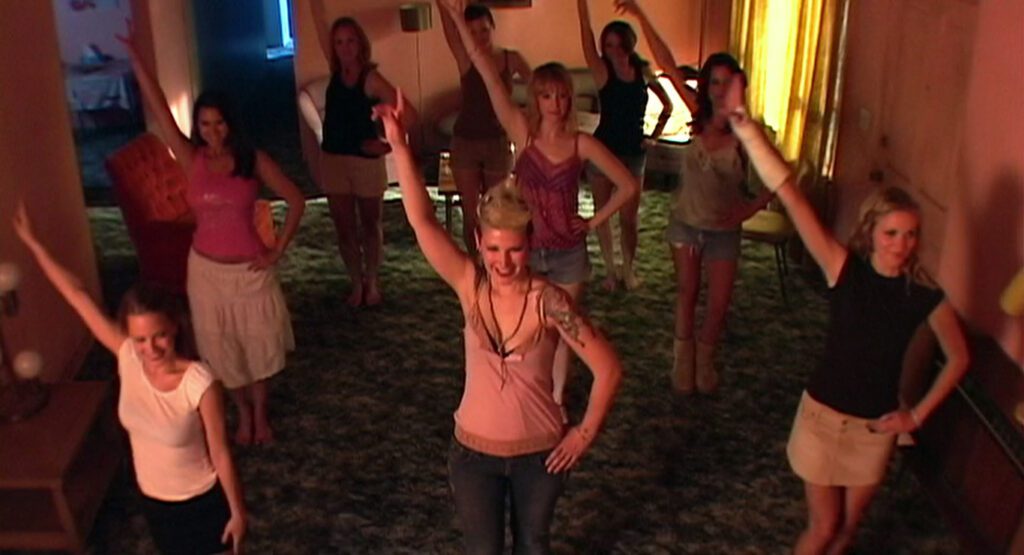
Although Warning Shadows is about the power of movies to make us better people, it ends by acknowledging that this power cuts both ways. The showman rides off on the back of a pig, a reminder that he, like movies themselves, is a trickster, capable of fooling us as well as improving us. Because he manipulates shadows for a living he’s always been suspect, and though he proves benevolent the movie is clear about cinema’s negative potential. Inland Empire ends with the same ambiguity. Moved by her encounter with Nikki both on and off the television, the lost girl reunites with her husband and son. We know enough to gather that Nikki’s movie redefines failure for the lost girl, so that she’s ready to reconcile with her family. This is the kind of work cinema ought to do, but we also see its darker potential: how it creates psychosis, like when Nikki confuses fantasy with reality during her rehearsal; how it manipulates our emotions, as in the rabbit show; or how it compounds normal human failure by prostituting or corrupting our lives.
Complementing this ambiguity are the lyrics to “Polish Poem”, a song written for Inland Empire by David Lynch and Chrysta Bell, which accompanies the lost girl at the beginning and end. Its lyrics address someone “on the other side” who could just as well be a lost spouse or someone on the other side of a screen. Toward the end it asks, “What will make me want to live? What will make me want to love?” If watching Nikki’s movie inspires the lost girl to run joyfully back to her family, these questions point to cinema’s power to give us the will to live and love; but they also raise the question of what exactly movies are putting right when they do that – isn’t there also a side of Hollywood that drains the love of life out of us? The song’s final words, “Something is happening”, which conclude Inland Empire‘s narrative (before the long coda), are more pointedly ambiguous. They sound uplifting, a fitting accompaniment to the lost girl’s reconciliation. Their darker side is not so much the obvious reversal, i.e. something bad happening, but rather their potentially mocking tone. Hollywood has always goaded us with the idea that “something is happening” in its own world that’s more exciting than our ordinary lives. At their best movies can get us to appreciate life with greater feeling, but at their most destructive they entice us to crave a life that’s always more dramatic.
CONNECTIONS:
Warning Shadows – Movie within a movie; wealthy man jealous of his wife; power of cinema for good and bad; lights in opening titles representing cinematic apparatus; characters see themselves from outside
I Wake Up Screaming – Hollywood as an invasive force colonizing the private areas of people’s minds
Eraserhead – Radiator representing Hollywood
Lost Highway – Hollywood sign; gangsters representing dramatic side of Hollywood
Mulholland Drive – Hollywood sign; title as a synecdoche or metaphor for Hollywood; homelessness representing fear of failure; update of a German Expressionist film for a new century